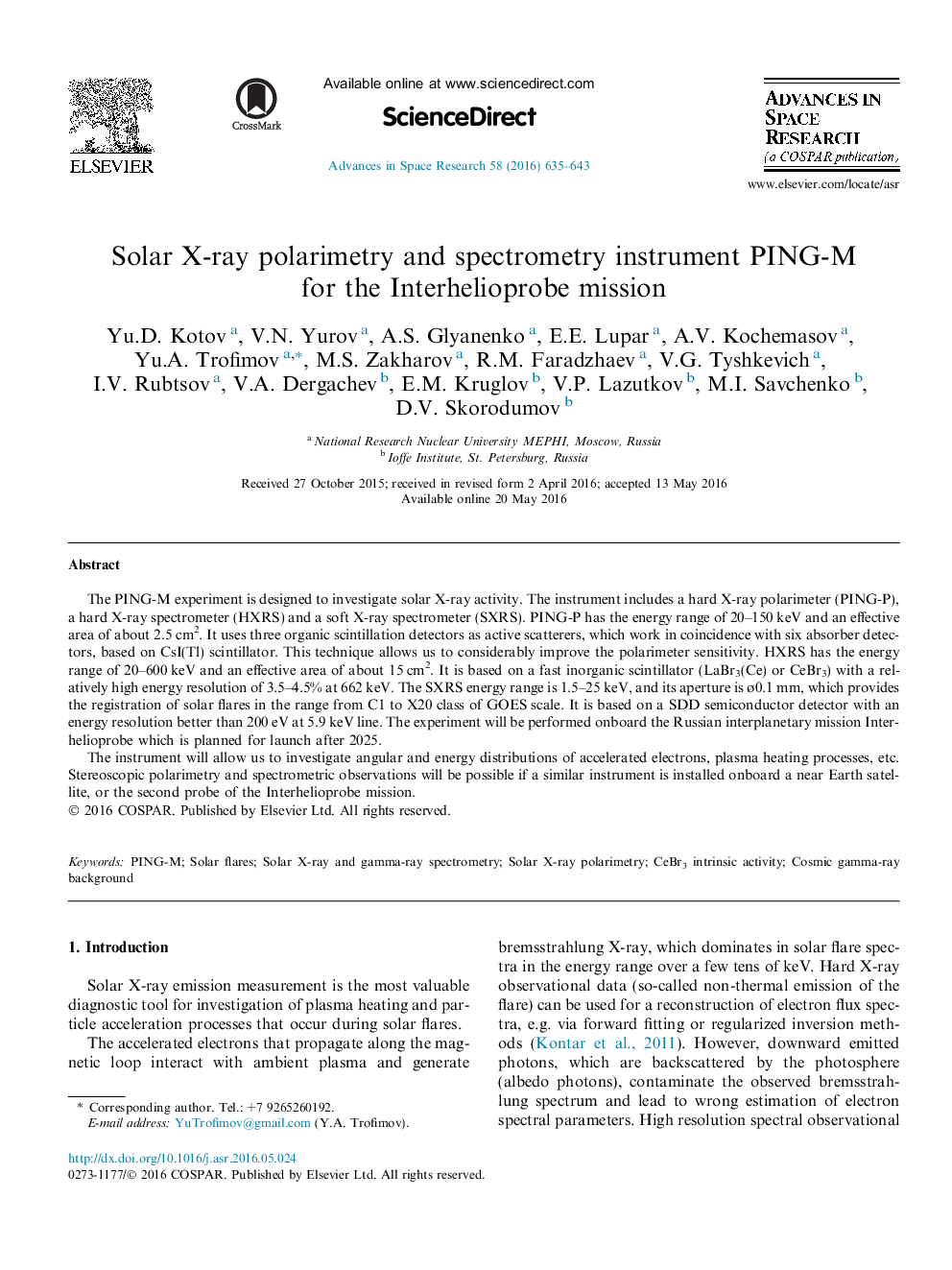| Article ID | Journal | Published Year | Pages | File Type |
|---|---|---|---|---|
| 1763274 | Advances in Space Research | 2016 | 9 Pages |
The PING-M experiment is designed to investigate solar X-ray activity. The instrument includes a hard X-ray polarimeter (PING-P), a hard X-ray spectrometer (HXRS) and a soft X-ray spectrometer (SXRS). PING-P has the energy range of 20–150 keV and an effective area of about 2.5 cm2. It uses three organic scintillation detectors as active scatterers, which work in coincidence with six absorber detectors, based on CsI(Tl) scintillator. This technique allows us to considerably improve the polarimeter sensitivity. HXRS has the energy range of 20–600 keV and an effective area of about 15 cm2. It is based on a fast inorganic scintillator (LaBr3(Ce) or CeBr3) with a relatively high energy resolution of 3.5–4.5% at 662 keV. The SXRS energy range is 1.5–25 keV, and its aperture is ø0.1 mm, which provides the registration of solar flares in the range from C1 to X20 class of GOES scale. It is based on a SDD semiconductor detector with an energy resolution better than 200 eV at 5.9 keV line. The experiment will be performed onboard the Russian interplanetary mission Interhelioprobe which is planned for launch after 2025.The instrument will allow us to investigate angular and energy distributions of accelerated electrons, plasma heating processes, etc. Stereoscopic polarimetry and spectrometric observations will be possible if a similar instrument is installed onboard a near Earth satellite, or the second probe of the Interhelioprobe mission.
